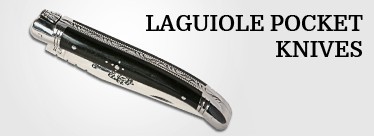Blades

Carbon, stainless steel and Damas
At Actiforge, we want our clients to be able to make an informed choice when buying a Laguiole knife. Understanding how to chose the handle material which will best suit your needs, knowing which kind of steel your blade needs to be made of in order to fit you, all of these are essential.
In this section, find out more about the different types of blades and their characteristics. Giving you clear and detailed information means that you can then choose a knife which will be with you for many years and fulfill all your needs.
Our knives are made in Thiers, in Auvergne. Thier’s cutlery making tradition dates back to the 15th century, when the pure water flowing down from the Massif Central mountains gave steel tempering an exceptional character. Cutlery-making has become more modern of course, but Laguiole knives making remains a craft. Our knives are adjusted by hand according to age-old traditions. They come with a lifetime guarantee.
Keeping a beautiful blade
- For blades in carbon steel or stainless steel :
Make a point of wiping the blade after use.
If it is a carbon blade, wipe regularly with a cloth soaked in oil.
- For Damascus steel blades :
Keep the knives in a dry place. Avoid keeping it in a leather case as this can cause dampness.
Damascus carbon steel blades can get dark patches caused by oxidization.
In this case, finely coat the knife in a layer of talcum powder, which is then wiped off with blotting paper.
Finish off with a coat of organic oil (avoid using mineral oil) using a new piece of blotting paper.
Cleaning with polishing paste can revive the most tarnished Damascus blades, but use moderately as these pastes are quite abrasive and in the long term spoils the Damascus effect.
Varnishing Damascus blades :
For collection knives used in exhibitions, the blades can be preserved by applying a varnish used by sculptors.








